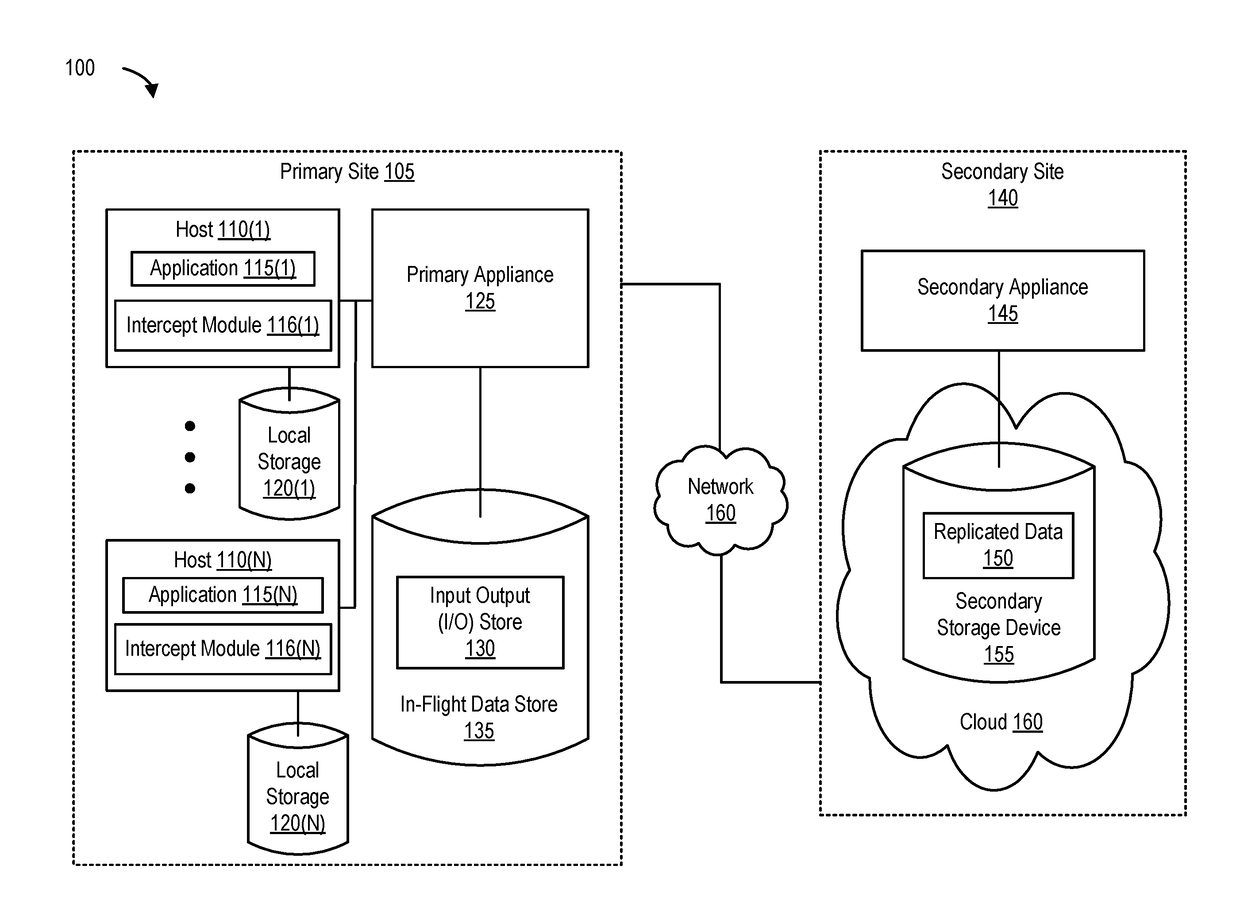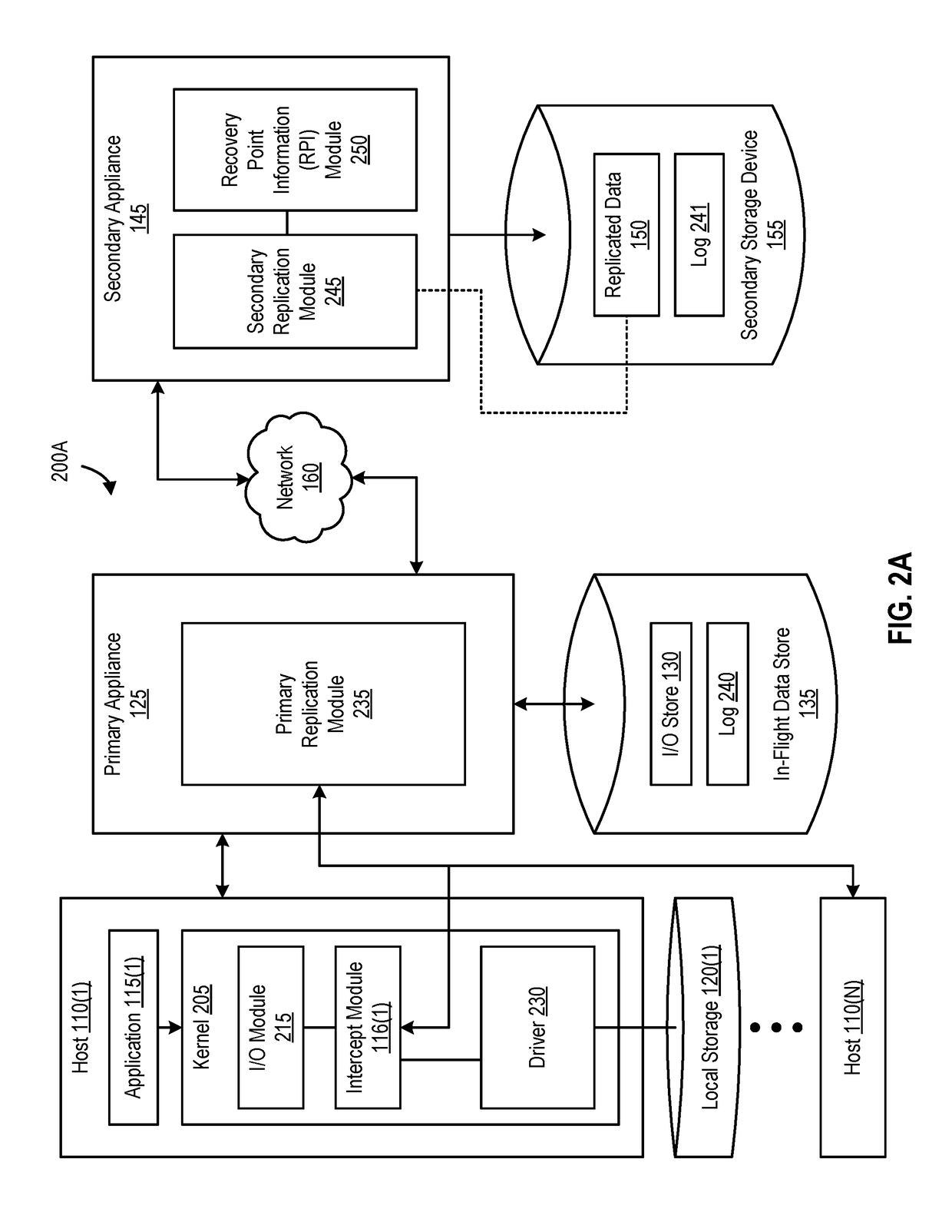Recovery point objectives in replication envrionments
a recovery point and replication technology, applied in data switching networks, fault response, instruments, etc., can solve problems such as replication lag, failure to allow end users to change software, and breach of one or more service level agreements (slas), so as to increase the input/output bandwidth and increase the network bandwidth
- Summary
- Abstract
- Description
- Claims
- Application Information
AI Technical Summary
Benefits of technology
Problems solved by technology
Method used
Image
Examples
Embodiment Construction
Introduction
[0028]FIG. 1 is a block diagram of a distributed replication system, according to one embodiment. In this example, such a distributed replication system includes at least two sites—a primary site 105 and a secondary site 140. Primary site 105 and secondary site 140 can be data centers, clusters, cloud environments, and the like. Primary site 105 and secondary site 140 are communicatively coupled to each other via network 160. Network 160 can include any type of network or interconnection (e.g., the Internet, a Wide Area Network (WAN), a Storage Area Network (SAN), and the like).
[0029]Primary site 105 includes hosts 110(1)-(N). Each host execute one (or more) applications and uses a local storage. For example, host 110(1) executes application 115(1) and uses a local storage 120(1). Local storage 120(1) can be used to store I / Os generated by application 115(1). Primary site 105 also implements a primary appliance 125 (e.g., a premise appliance). Primary appliance 125 can b...
PUM
 Login to View More
Login to View More Abstract
Description
Claims
Application Information
 Login to View More
Login to View More - R&D
- Intellectual Property
- Life Sciences
- Materials
- Tech Scout
- Unparalleled Data Quality
- Higher Quality Content
- 60% Fewer Hallucinations
Browse by: Latest US Patents, China's latest patents, Technical Efficacy Thesaurus, Application Domain, Technology Topic, Popular Technical Reports.
© 2025 PatSnap. All rights reserved.Legal|Privacy policy|Modern Slavery Act Transparency Statement|Sitemap|About US| Contact US: help@patsnap.com



